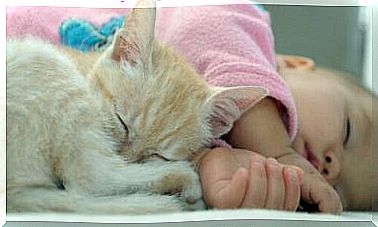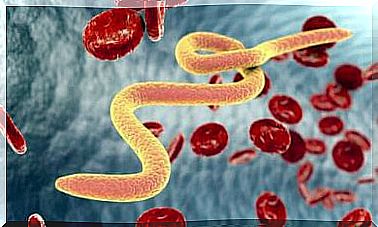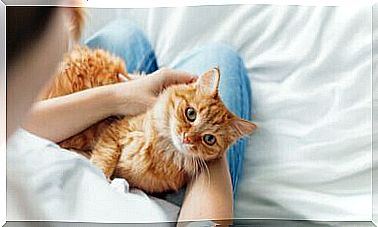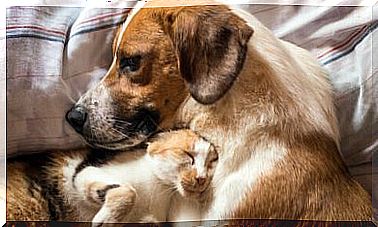Diseases We Can Pass On To Our Pets

Although it is always said that dogs and cats can infect us with certain diseases, it is also true that there are diseases that we can transmit to pets. Would you like to know what they are? So, keep reading the following article.
What are the diseases we can transmit to pets?
Let’s see what diseases we can transmit to pets. In fact, it’s easier to do the opposite (animals transmit diseases to us). However, we can be the cause of illness in our pets. Today, it is known that dogs and cats can suffer from arthritis, diabetes, constipation, intestinal problems, allergies and other illnesses considered “human”.

Authors: Christine and David Schmitt
This is because, like us, they too live in a world full of contamination and stress. Diseases that until a few years ago did not affect them, are now common among them. In addition, we must take into account that, although it is necessary to vaccinate pets, there are no treatments against certain viruses. This also applies for the case of some bacteria and micro-organisms that we “pass on to them”.
Did you know that our pets can get sick like people? They spend many hours by our side. Remember that they are like a sponge, absorbing everything around them. When you are stressed, your dog will be too. If you feel depressed, the pet will probably feel the same way… And so it is with each of the emotions we experience.
Food may be another factor we should consider. Remember that she can be responsible for the illnesses that pets “catch”. If, in addition to the ration specifically recommended for them, we give them “human” food, we will be offering them processed flour, artificial ingredients, preservatives, refined sugars, fat, etc.
It’s critical to be careful how we feed our pets. If it’s not a diet with enough nutrients for him, he’s more likely to get sick. This is not to say that excessive care needs to be taken (which is also not good). However, don’t forget that you need to pay more attention to the food we offer them.
We will not be transmitting a disease when we offer an inadequate diet. However, if we are doing this, our pet will be at greater risk of developing certain diseases, such as : obesity, diabetes or high blood pressure, and anything related to diet.
Flu and tuberculosis, two communicable diseases
Among the most “common” illnesses that a person can transmit to their dog or cat is tuberculosis. While there are vaccines for humans to prevent development and transmission, there are many more TB than people think.
On the other hand, we can infect them with taeniasis. It is a parasite that is eliminated through our feces and that the animal can sniff out.
The most common illness that we transmit to our pet is the flu. When winter starts, we don’t usually notice it. However, in addition to taking care not to spread the cold to other people, we should move away from the dog or cat a little to prevent them from getting sick too.
The dangers of reverse zoonosis
This concept of transmission of human-animal diseases is called “reverse zoonosis”. Even though it’s not something that is very well known, a lot of research is done to show people how to prevent it.
New flu strains (including the most recent pandemic influenza known as H1N1) have evolved enough to affect not just people but animals as well. First, they arise in pigs and birds. They are then transmitted to humans. And then the pets. The worst thing is that dogs and cats have neither the defense nor the adequate immunization to fight these diseases. Thus, a simple cold can cause your death.
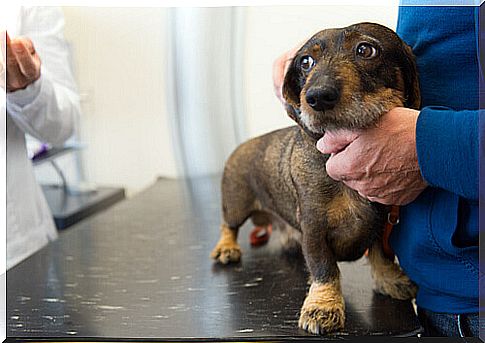
Although there are very few documented cases of inverse zoonosis, the truth is that it is something that worries veterinarians more and more. Even if, of course, the focus of attention remains the transmission of disease from animals to people.
It is recommended that, if someone has the flu, they stay away from their pets as much as possible (especially from cats, which are often more vulnerable to respiratory illnesses). No sleeping with your pet in your bed. What’s more, not even in the same room, until you’re 100% healed.
The symptoms of this disease in these pets are similar to those in people. They experience weakness, fever, loss of appetite and mood swings.
These are diseases that we can pass on to pets. Remember to prevent your pet from getting sick by taking him to the vet regularly.
Main image source: Alan Levine

